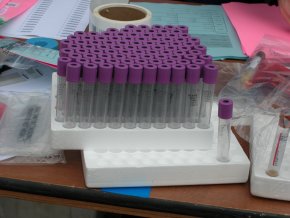Active Monitoring Versus Potential Complications from RRP
Background:
Since the introduction of widespread PSA screening, prostate cancer has become the leading cancer diagnosis in US men. Even though death from prostate cancer has significantly declined in recent years, there is concern that the treatment of some men with low-risk prostate cancer may result in more harm than good.
Question:
What is the frequency of treatment-related complications from RRP among potential candidates for active monitoring?

What We Found:
Radical prostatectomy was associated with a low complication rate and good long-term functional outcomes in low-risk men.
Men who are potential candidates for active monitoring have a low risk of treatment-related death and therefore, should not be counseled against treatment that could potentially cure them because of fear of complications.
Study:
From a large radical prostatectomy database, we identified men meeting one of the criteria for active monitoring from recent medical literature. We compared potency, continence and other complications of treatment among men meeting these criteria. Complications occurred in 7% of this group. Overall continence was 90%. Overall potency was 62%. (The results are 85-95% for men in their 40s and 50s but only 50% for men in their 70s.)
Stacy Loeb, MD, Washington DC; Neema Navai,MD, Chicago, IL; Kimberly A. Roehl, St. Louis, MO; Bradley A. Erickson, MD; Wiliam J. Catalona, MD, Chicago, IL







